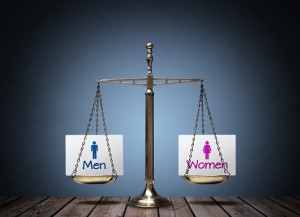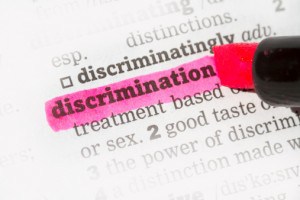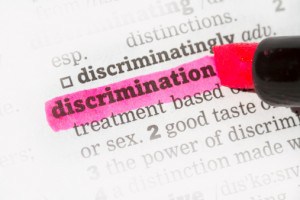This is the second post on recent Supreme Court cases. This one is of special interest to me for two reasons. First, I attended the oral argument at the Supreme Court in December. Second, I’ve been asked to speak on this topic at the Judicial Conference for the U.S. Court of Appeals for the Sixth Circuit. My presentation is in Detroit on Thursday of this week, but the following is a sneak peak.
Congress passed the Pregnancy Discrimination Act, or PDA, in 1978. The Act amended the definition of “on the basis of sex” in Title VII. 42 U.S.C. § 2000e(k). The Act has two parts. The first part explicitly defines “on the basis of sex” to include “pregnancy, childbirth, or related medical conditions.” The second part provides that “women affected by pregnancy, childbirth, or related medical conditions shall be treated the same for all employment-related purposes, including receipt of benefits under fringe benefit programs, as other persons not so affected but similar in their ability or inability to work.” It also provides that a seniority or merit system provided for in other parts of Title VII cannot excuse this different treatment.
While the Supreme Court and other federal courts have examined the meaning of “pregnancy, childbirth, or related medical conditions” many times, the second, equal treatment provision had seldom been addressed before the recent decision in Young v. UPS. In 2014, the Young v. UPS case went before the Supreme Court, asking the Court to interpret this second part of the PDA. The Court’s March 25, 2015, decision does just that.
Peggy Young, the plaintiff in Young v. UPS, worked as a part-time delivery driver for UPS. As a driver, she was responsible for loading and unloading her van and making deliveries. In 2006, following two unsuccessful rounds of in vitro fertilization, Ms. Young requested leave to try a third round. When she became pregnant, she asked to extend her leave. During her leave, she indicated to her supervisor that she would be unable to lift more than 20 pounds for the first twenty weeks of her pregnancy or more than 10 pounds thereafter. Upon Ms. Young’s request for extended leave, UPS informed her that she would not be permitted to work as long as she had the 20-pound restriction, despite Ms. Young’s asserts that she rarely had to lift packages weighing more than 20 pounds and that coworkers had agreed to help her when necessary. Eventually, UPS informed Ms. Young that she would not be able to return to work until after she was no longer pregnant. She returned to work after giving birth.
Ms. Young’s suit revolves around three UPS policies. First, UPS defined the essential functions of driver as including the ability to lift up to 70 pounds and assist in lifting up to 150 pounds. Second, under a collective bargaining agreement, UPS must provide light duty to employees who are injured on the job or suffer from permanent impairments cognizable under the ADA; this provision specifically does not include pregnant workers. Third, another collective bargaining agreement provision required that UPS give an “inside job,” which is not considered light duty, to drivers who lost their certification due to a failed medical exam, lost or suspended driver’s license, or involvement in a car accident. Ms. Young asserts that, because UPS’s policies, which allow light duty for on-the-job injury and disability but not for pregnancy, violate the PDA by failing to treat pregnant women the same “as other persons not so affected but similar in their ability or inability to work.”
The district court ruled in favor of UPS on summary judgment; on appeal, the Fourth Circuit affirmed. The Fourth Circuit found that UPS’s policy of limiting accommodations to workers injured on the job, disabled, or without certification was “pregnancy-blind.” Turning specifically to the second clause of the PDA, the court then concluded that the potentially broad language was limited by the specific definition in the first clause. The court determined that the PDA worked only to expand the definition of “sex” to include pregnancy, not to allow special treatment for pregnant workers above that accorded to other workers who may also suffer disqualified illness or injury. Thus, the court held, the second section did not create a separate cause of action. In doing so, the Fourth Circuit explicitly declined to follow Sixth Circuit precedent in Ensley-Gaines v. Runyon, 100 F.3d 1220 (6th Cir. 1996), where the Sixth Circuit held that showing a pregnant plaintiff was treated differently than a nonpregnant employee similar in their ability or inability to work established a prima facie case of pregnancy discrimination.
The Supreme Court specifically addressed the following question: The PDA requires giving the same accommodations to an employee with a pregnancy-related work limitation as it would give that employee if her work limitation stemmed from a different cause but had a similar effect on her inability to work. Suppose the employer would not give that pregnant employee the same accommodations as another employee, but the employer’s reason for the difference in treatment is that the pregnant worker falls within a facially neutral category (for example, individuals with off-the-job injuries.) What is a court then to do?
Young argued that the second clause of the Act should be interpreted broadly and literally. She argued that as long as an employer accommodates only a subset of workers with disabling conditions, pregnant workers who are similar in the ability to work must receive the same treatment, even if still other nonpregnant workers do not receive accommodations.
UPS argued that the second clause does no more than define sex discrimination to include pregnancy discrimination.
Ultimately the Court did not accept either interpretation. It found that Young’s approach would grant pregnant workers a “most-favored-nation” status, which could not have been Congress’ intent in passing the PDA. Adopting UPS’ interpretation of the second clause would render the first clause superfluous, which the Court chose to avoid. The Court also declined to follow the EEOC’s July 2014 guidelines which provided an example of disparate treatment of pregnant workers that mirrored the facts in Young’s case exactly. Specifically because these EEOC guidelines were released after the Court granted certiorari in this case and took a position about which the previous guidelines were silent, the Court did not rely on them.
Rather, the Court held that a plaintiff alleging that the denial of an accommodation constituted disparate treatment under the PDA’s second clause may make out a prima facie case by showing, as in McDonnell Douglas that she belongs to the protected class, that she sought accommodation, that the employer did not accommodate her, and that the employer did accommodate others “similar in their ability or inability to work.” The employer may then seek to justify its refusal to accommodate the plaintiff by relying on legitimate, non-discriminatory reasons for denying her accommodation. That reason normally cannot consist simply of a claim that it is more expensive or less convenient to add pregnant women to the category of those whom the employer accommodates.
If the employer offers an apparently legitimate, non-discriminatory reason for its actions, the plaintiff may in turn show that the employer’s proffered reasons are in fact pretextual. A plaintiff may reach a jury on this issue by providing sufficient evidence that the employer’s policies impose a significant burden on pregnant workers and that the employer’s legitimate nondiscriminatory reasons are not sufficiently strong to justify the burden. What is a significant burden? The Court says the plaintiff can create a genuine issue of material fact as to whether a significant burden exists by providing evidence that the employer accommodates a large percentage of nonpregnant workers while failing to accommodate a large percentage of pregnant workers.
The Court found a genuine material dispute as to whether UPS provided more favorable treatment to at least some employees whose situation cannot reasonably be distinguished from Young’s. Therefore it vacated the judgment of the Fourth Circuit and remanded the case for decision based on the new interpretation.
 Even the most naïve of my friends and colleagues will admit that there’s wage gap in this country. It’s not necessarily $0.77 on every dollar – sometimes it’s more; sometimes it’s less; sometimes it’s in the boardroom; sometimes it’s on the soccer pitch – but it exists. The news is filled with supporters and detractors, and with employers who plan on studying, or examining, or analyzing, or reviewing (or any variety of “ing” verbs) the issue to conclude about why it exists, but rarely do you read or hear a story about resolving the issue in a real or concrete way.
Even the most naïve of my friends and colleagues will admit that there’s wage gap in this country. It’s not necessarily $0.77 on every dollar – sometimes it’s more; sometimes it’s less; sometimes it’s in the boardroom; sometimes it’s on the soccer pitch – but it exists. The news is filled with supporters and detractors, and with employers who plan on studying, or examining, or analyzing, or reviewing (or any variety of “ing” verbs) the issue to conclude about why it exists, but rarely do you read or hear a story about resolving the issue in a real or concrete way. A curious thing is happening to our news outlets. Over the course of the last few weeks, we’ve noticed more and more stories that focus on accusations of sexual harassment, on gender discrimination, and on sexism and feminism (and the conflation between the two).
A curious thing is happening to our news outlets. Over the course of the last few weeks, we’ve noticed more and more stories that focus on accusations of sexual harassment, on gender discrimination, and on sexism and feminism (and the conflation between the two). As
As  When the University of Tennessee decided to merge its women’s and men’s athletics departments back in 2012, many people lauded the decision to stop segregating sports teams. Merging the departments showed solidarity, right? Instead, three employees of the department found themselves the victims of gender discrimination, claiming that they received less pay for equal work because of their association with the women’s sports teams. After they raised concerns about the situation with the University in 2010,
When the University of Tennessee decided to merge its women’s and men’s athletics departments back in 2012, many people lauded the decision to stop segregating sports teams. Merging the departments showed solidarity, right? Instead, three employees of the department found themselves the victims of gender discrimination, claiming that they received less pay for equal work because of their association with the women’s sports teams. After they raised concerns about the situation with the University in 2010,  In early December of 2015 Fortune.com published an article about one of the witnesses in the case of Ellen Pao v. Kleiner Perkins Caufield & Byers LLC and DOES 1-20 (a gender discrimination case out of San Francisco), a woman named Trae Vassallo. What Ms. Vassallo discovered, after she delivered testimony about her own experiences with sexual harassment, was that an “
In early December of 2015 Fortune.com published an article about one of the witnesses in the case of Ellen Pao v. Kleiner Perkins Caufield & Byers LLC and DOES 1-20 (a gender discrimination case out of San Francisco), a woman named Trae Vassallo. What Ms. Vassallo discovered, after she delivered testimony about her own experiences with sexual harassment, was that an “